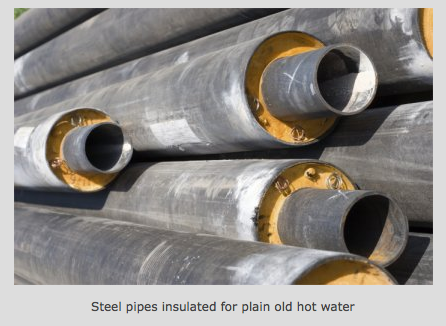By joetinger on December 30, 2010
When designing or maintaining a hot-oil system, one important aspect is thermal insulation; adequate insulation is a necessary evil on these systems.
Even if energy costs were zero, there would still be the need to protect company personnel (especially overzealous young process engineers and nosy visitors from headquarters) from exposure to hot pipes. Not to mention the huge ventilation fans that would be required in the heater room to keep the control panel from melting.

Hydrocarbon-based heat transfer fluids present a unique insulating problem because fluid that leaks into the insulation can become a fire hazard. The continued exposure to high temperature inside the insulation and the limited fresh air supply combine to partially oxidize the fluid into very different material. Autoignition occurs when either—
- The molecular rearrangement produces a compound that ignites at the existing temperature and oxygen level.
- A sudden increase in oxygen allows ignition as is.
Either way, you’ve got a problem. This phenomenon is similar to the pile of oily rags that spontaneously ignites in the garage.
The next couple of blog postings will focus on how to minimize the fire hazard from insulation.
|
